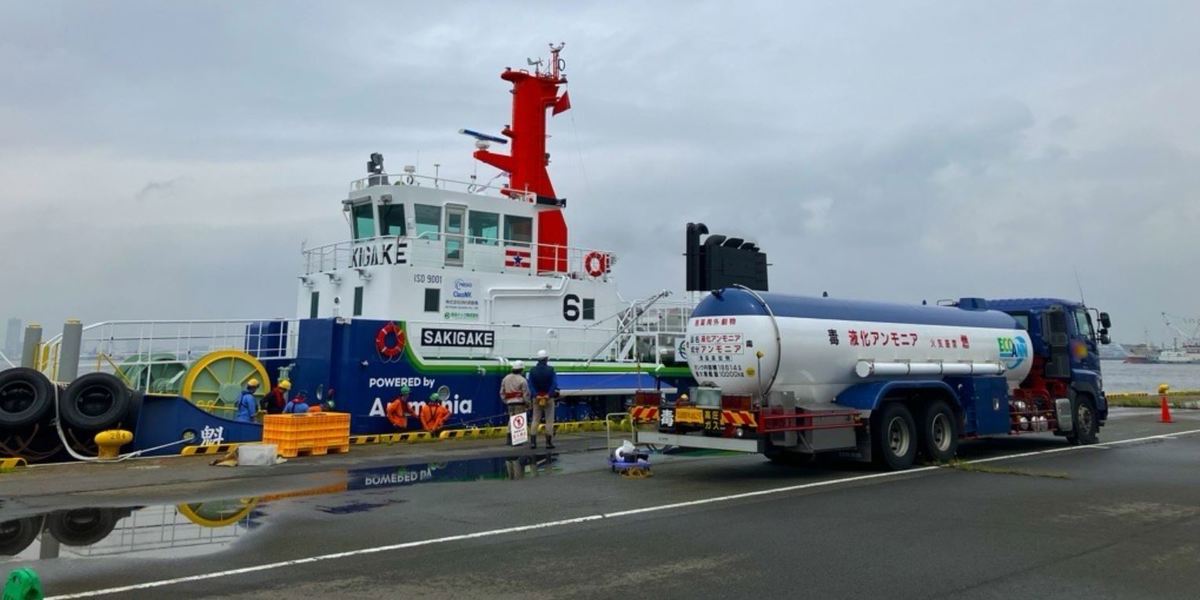ABS issues industry’s first ammonia bunkering advisory
Risk assessment to prevent gas release and ensure safety should be the top priority during ammonia bunkering due to ammonia’s toxic nature, the classification society American Bureau of Shipping (ABS) states.
 PHOTO: NYK Line’s ammonia-powered tugboat bunkered ammonia in a truck-to-ship bunkering operation at Yokohama Port’s Honmoku Pier. JERA
PHOTO: NYK Line’s ammonia-powered tugboat bunkered ammonia in a truck-to-ship bunkering operation at Yokohama Port’s Honmoku Pier. JERA
International safety standards require bunkering stations for liquefied or flammable gas fuels to be on open decks to ensure proper ventilation. However, for ammonia, it is recommended to enclose the bunkering stations and use mitigation systems like continuous ventilation, gas detection and water spray to control potential leaks and prevent ammonia’s release into the atmosphere, ABS explains in the ammonia bunkering advisory.
Bunkering systems should be free of ammonia when not engaged in bunkering operations, it advises. This could reduce the risk of accidental exposure to ammonia and any potential leaks.
The bunkering system should be treated with an inert gas like nitrogen to control moisture and then gassed up to replace the inert gas with ammonia vapor before the bunkering operation starts. A leak or pressure test must be conducted to ensure system integrity before transfer, ABS recommends.
After bunkering, the hoses should be drained and any remaining liquid or vapor should be purged using inert gas to clear ammonia. Ammonia must be captured during purging using treatment systems and should not be released into the air or sea due to its high toxicity.
Controlled zones should be established around the ammonia bunkering area to ensure safety and mitigate unexpected damage in case of leakage. These zones can be classified into hazardous, safety, toxic and security zones
The controlled zones can be determined based on “gas dispersion analysis, risk assessments and relevant international requirements” by the port and local authorities, the advisory suggests.
Gas and liquid detectors should be installed on both the supplier and receiving ends for ship-to-ship bunkering of ammonia, and by port authorities for additional safety measures, it adds.
Finally, the advisory stresses that emergency procedures in case of major ammonia release during bunkering operations must include emergency shutdown systems designed to immediately halt ammonia transfer, evacuation of personnel and emergency medical treatment.
By Konica Bhatt
Please get in touch with comments or additional info to news@engine.online





